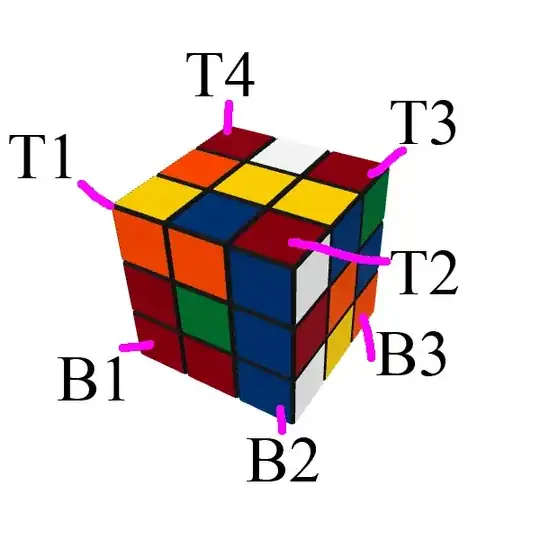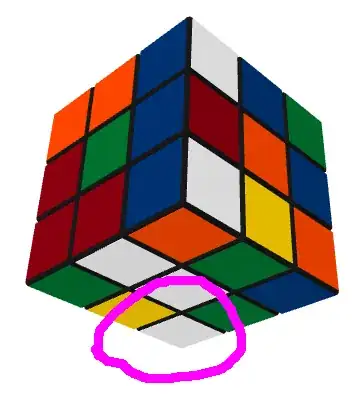This is an appendix to the Makholm's answer. It is, in fact, an example that I prepared for you.
Suppose our Rubik's cube is scrambled and we see only 7 corners. 4 top ones and 3 bottom ones. We name them $T1,T2,T3,T4$ and $B1,B2,B3$ respectively. Hidden will be called $B4.$ In our case the top is yellow and the bottom is white.

Let us, for fun, call yellow and white colors as good colors.
Now we play the following game. First to each visible corner we attach number 0,1 or 2:
- 0 if the good color is on top (resp. bottom)
- 1 if we need to twist corner clockwise to get good color on top (resp. bottom)
- 2 if we need to twist corner anticlockwise to get good color on top (resp. bottom)
In our situation we have: $T1-0;T2-2;T3-2;T4-1;B1-2;B2-1;B3-1.$ If you are not comfortable with colors on rubiks cube you have to believe me in $T4,B1$ and $B3.$
Next we add all this numbers modulo $3.$ $$X=0+2+2+1+2+1+1=9=0 \mod 3.$$
Our claim for $B4$ is following:
- if $X=0$ then good color is on bottom
- if $X=1$ then we need to twist corner anticlockwise to get good color on bottom
- if $X=2$ then we need to twist corner clockwise to get good color on bottom
Surprise!


